Discover Rabat: Your Guide to the Top 7 Must-Remember Attractions
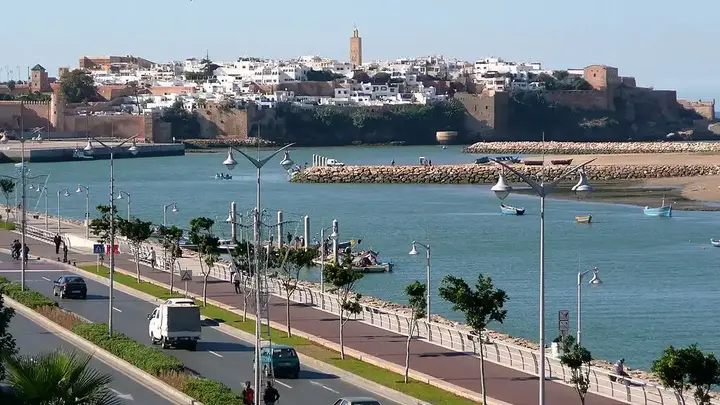
Rabat, the capital of Morocco, is a city full of history and culture, where Arab-Islamic architecture meets modern European style. This charming city is home to a range of tourist and historical attractions that tell stories about Morocco's rich past and prosperous present. In this article, we will explore seven of the most prominent of these landmarks, which are a testament to the grandeur and beauty of Rabat.
Show key points
- Rabat seamlessly blends Arab-Islamic architecture with modern European elements, creating a city rich in both historical depth and contemporary charm.
- The Kasbah of the Oudayas, a twelfth-century fortress with high walls and tranquil blue-and-white alleyways, offers a vibrant look into Morocco's past and present cultural life.
- Hassan Tower, an incomplete twelfth-century minaret, remains a striking symbol of Islamic architectural ambition and stands as a lasting monument to Rabat's medieval history.
- ADVERTISEMENT
- Chellah, a remarkable archaeological site, showcases Roman ruins alongside Islamic-era additions, revealing the multicultural layers of Morocco’s civilization.
- The Mohammed VI Museum of Modern and Contemporary Art reflects Morocco's artistic evolution and serves as a dynamic space for cultural exchange and creative expression.
- In the heart of the city, the bustling Medina offers an authentic glimpse into Moroccan life, with traditional markets, mosques, and artisans preserving centuries-old customs.
- Jama al-Sunnah, one of the largest and oldest mosques in Rabat, symbolizes Morocco's rich religious heritage and exemplifies traditional Moroccan-Islamic architecture.
1. Kasbah of the Valleys: A Journey Through History
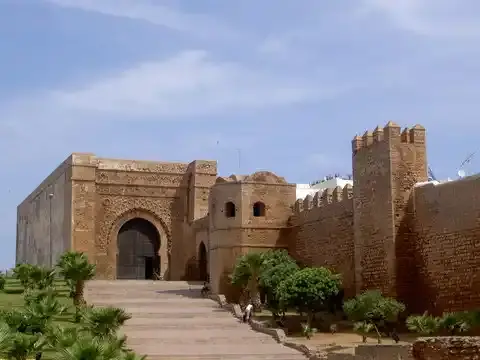
Located on the banks of the Bouregreg River, the Kasbah of the Oudaya is an architectural masterpiece and one of the most beautiful landmarks of Rabat. The Kasbah dates back to the XII century. It was built during the reign of the Almohad Sultan Yacoub al-Mansur, and is considered one of the most important historical monuments in Rabat.
Recommend
The Kasbah is distinguished by its high walls and powerful towers that formed a solid defense against the invaders. Today, the Kasbah is a UNESCO World Heritage Site and a magnificent example of Islamic architecture.
When you enter the Kasbah, you will feel that you have gone back in time. Narrow alleys and houses of blue and white color give a feeling of calm and tranquility. You can wander around the gardens, where tall trees and diverse plants add special beauty to the place. You can also visit the Ouadia Museum, which displays a collection of artifacts that tell the history of Morocco.
The Kasbah is not just a historical landmark, it is a place to live and socialize. It is inhabited by locals who maintain their traditions and live a daily life that reflects the city's rich history. The Kasbah is also a center of arts and culture, with many cultural events and festivals that attract visitors from all over the world.
A living example of Moroccan history, the Kasbah of Oudaya offers visitors a unique experience to explore the beauty and nobility of Rabat.
2. Hassan Hermitage: A Witness to the Ages
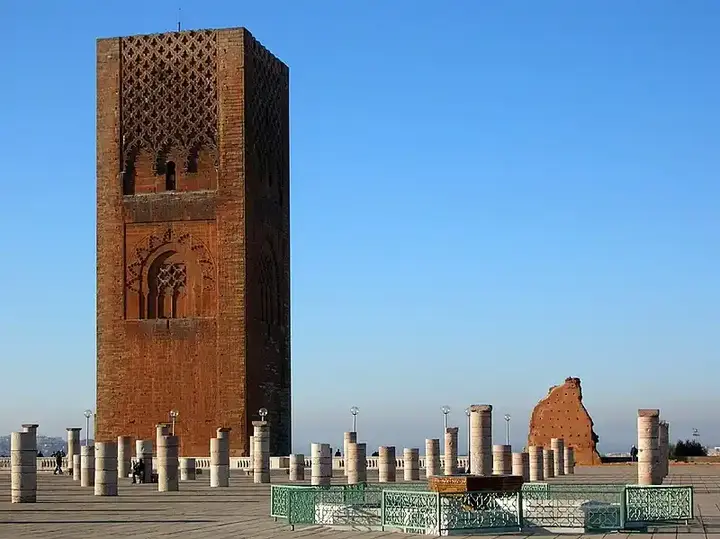
The Hassan Tower, standing tall in the heart of Rabat, is one of Morocco's most impressive historical monuments. Built in the twelfth century AD, it represents a magnificent example of Islamic architecture during the reign of Sultan Yacoub al-Mansur. Although the silo is not fully completed, it remains a symbol of the ambition and architecture of that period.
The silo is about 44 meters high, and it is among the tallest minarets in the Islamic world. It is known for its distinctive design that combines simplicity and beauty, with stucco decorations and Arabic writings that adorn its walls. The silo is surrounded by huge marble columns that support its roof, which gives a feeling of strength and stability.
The site is not only a historical landmark, it is also a place for reflection and reflection. Visitors from all over the world come to witness the grandeur of this building and to imagine what life was like in the Middle Ages. Next to the silo is a museum that houses a collection of artifacts that give a deeper insight into Islamic history in Morocco.
The Hassan Tower is a living example of Morocco's cultural and religious heritage. It stands as a witness to time, telling the stories of generations that have passed and reflecting the eternal spirit of Rabat.
3. Chellah Archaeological Site: Ruins of the Past
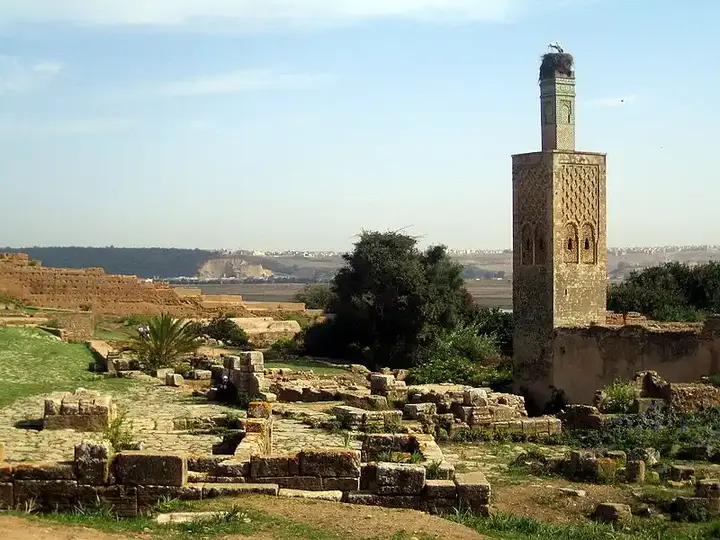
The archaeological site of Chellah is one of the most magnificent places that shows the greatness of successive civilizations in Morocco. Located in the heart of Rabat, this archaeological site dates back to the Roman and Islamic eras, making it a witness to the succession of many civilizations and cultures.
Chellah ruins feature the remains of a Roman temple, a complex of baths and historic houses, which reflect the ancient Roman architectural style. Visitors can also see huge marble columns and colorful floor mosaics that still retain their beauty despite the passage of time.
In the Islamic era, mosques, schools and cemeteries were added to the site, showing the harmony between the different civilizations that inhabited the region. Chellah is a place to learn and explore, where visitors can learn about Morocco's rich history and appreciate architecture spanning the ages.
The archaeological site of Chellah offers a unique experience for visitors, where they can wander among the ruins and reflect on the life that prevailed in these places in the past. It is a place that inspires visitors, enriches their knowledge of human history and gives them a chance to reflect on the civilizations that have contributed to building the world we live in today.
4. Mohammed VI Museum of Modern and Contemporary Art
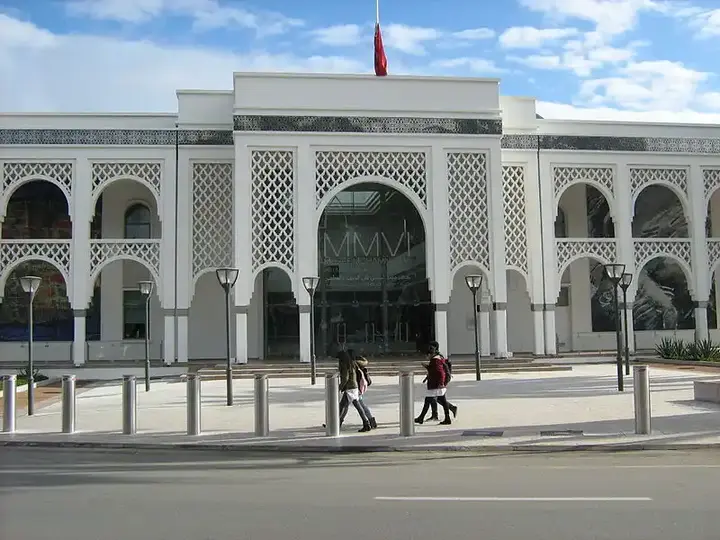
The Mohammed VI Museum of Modern and Contemporary Art is the first museum in Morocco dedicated to modern and contemporary art, located in the heart of the capital and one of Rabat's most important landmarks. Opened in 2014, the museum is a cultural landmark that reflects Morocco's commitment to art and culture.
The museum houses a wide range of artworks that include paintings, sculptures, and installations by Moroccan and international artists. The works are displayed in beautifully designed galleries, providing visitors with an immersive and interactive experience with art.
The museum shows the artistic development in Morocco from the beginning of the twentieth century to the present, allowing visitors a deeper understanding of the historical and cultural context of the artworks. The museum also offers educational programs and workshops for children and adults, with the aim of promoting artistic awareness and encouraging creativity.
The museum is a place of encounter and cultural exchange, where many temporary exhibitions and cultural events attract artists and art enthusiasts from all over the world. It expresses the modern spirit of Rabat and is considered a meeting point for diverse cultures.
A symbol of Morocco's cultural progress and openness, the Mohammed VI Museum of Modern and Contemporary Art offers visitors the opportunity to explore and interact with contemporary art in a contemporary and innovative way.
5. The Old Town: The Beating Heart of Rabat
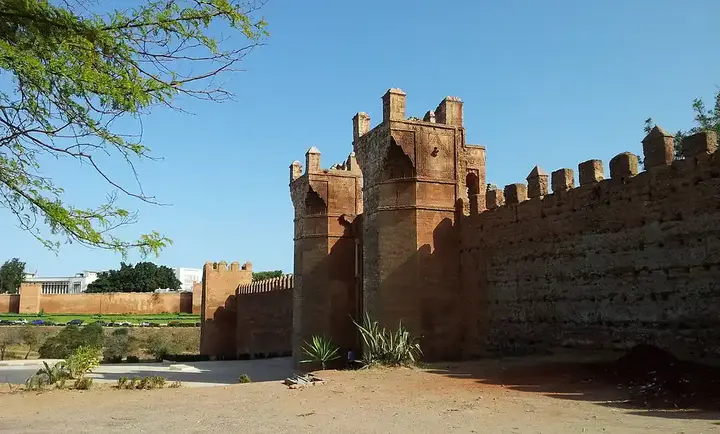
The Medina, or Medina, is the beating heart of Rabat and the center of history and culture, where daily life is reflected in its traditional form. Featuring narrow streets and lively markets, it is teeming with merchants and artisans displaying colourful fabrics, leather, jewellery, and local food.
The city has many historical mosques, such as the eighteenth-century Princess Mosque, which is a great example of Islamic architecture. The medina has many traditional landmarks and houses that give a glimpse of authentic Moroccan architecture.
One of the most prominent landmarks of the old city is the Qandil market, which is considered a center of traditional crafts. Visitors to the medina can buy decorative handmade metal jellyfish and sample Moroccan delicacies, such as tagine and couscous.
Offering an experience rich in colour, sounds and aromas, the medina gives visitors the opportunity to dive deep into Moroccan heritage and interact with the locals. It expresses the true spirit of Rabat, where the past meets the present in perfect harmony.
6. Rabat Archaeological Museum
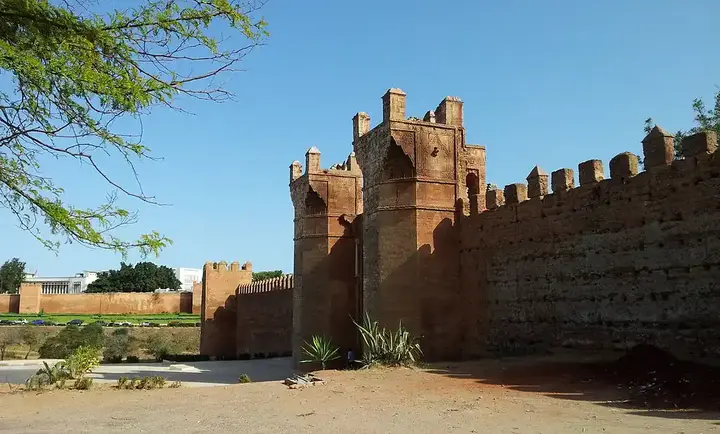
The Rabat Archaeological Museum, also known as the Museum of History and Civilizations, is one of the most important museums in Morocco and offers a comprehensive overview of the country's history from ancient times to the Islamic period. The museum was founded in the twenties of the twentieth century and includes a rich collection of artifacts that include ancient human tools, Neolithic tools, Libyan and Berber writings, Roman bronze and alabaster collections, and Islamic ceramic pieces.
Among the museum's most famous bronze artifacts are the head of King Juba II and the head of Katun, as well as other bronze statues such as the Laila Dog and the Sheikh Hunter1. Also on display in the museum is a statue of a Samni Roman gladiator made of mature clay found in Volubilis, a Christian censer, a Roman Menorah and a carved Sphinx.
The Rabat Archaeological Museum is a place to learn and explore, where visitors can learn about Moroccan heritage and wander through ruins that tell the stories of successive civilizations in the region.
7. Jama al-Sunnah: A symbol of Islamic architecture and Moroccan history
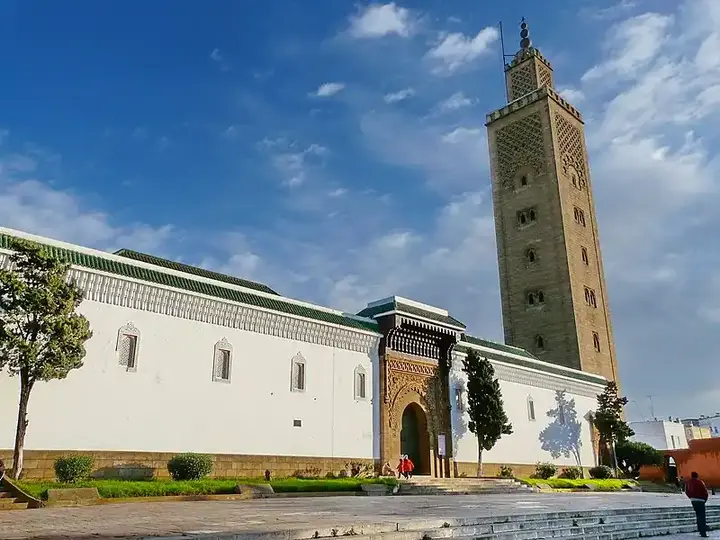
The Sunna Mosque is one of the prominent religious monuments in Rabat, founded by the Alaouite Sultan Moulay Mohamed Ben Abdallah in 1785 and is considered one of the largest mosques in Morocco. It is strategically located on Avenue Mohammed V.
It is distinguished by its semi-square floor plan and large rectangular courtyard surrounded by arcades, as well as the prayer hall consisting of three transverse arcades. The minaret, located in the southwest corner of the mosque, has carved decorations adorning its four facades and is a fine example of Islamic architecture.
The Sunni Mosque underwent several restorations, most notably in the nineteenth century and again in 1969, when the minaret was moved from its original location to a new site to enhance its perspective along Avenue Mohammed V. The mosque is characterized by its decorated gates and traditional Moroccan décor inside, and contains rooms that once housed students.
This mosque is not only a place of worship, it is also a symbol of Moroccan history and Islamic architecture, and shows Morocco's commitment to preserving its cultural and religious heritage. The Sunnah Mosque is a witness to many historical events and is considered a vivid example of architecture that combines beauty and function.
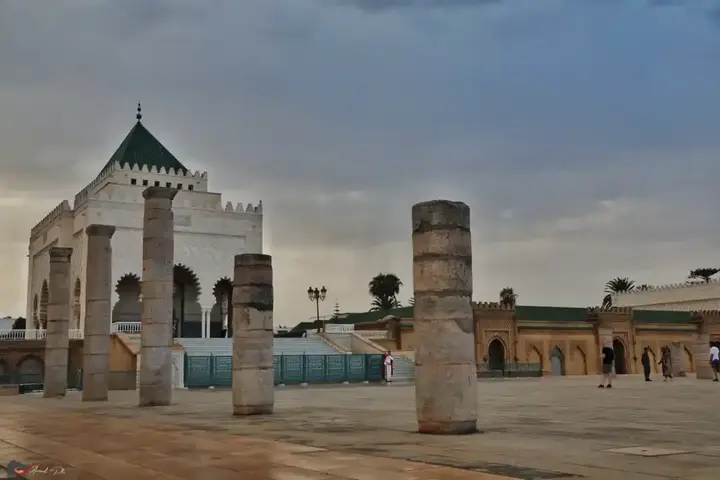
At the end of our tour of Rabat, we find ourselves surrounded by an unparalleled cultural and historical richness. From the Kasbah of the Oudaya to the Hassan Tower, from the archaeological site of Chellah to the Mohammed VI Museum of Modern and Contemporary Art, each landmark tells a long and vibrant story. The old city with its souks and alleys reflects the daily life of the Rabates, while the tower of the Hassan Tower and Chellah Castle stand as witnesses to the passage of time.
Rabat, with its historical landmarks, is a destination for all lovers of history, culture and art, offering visitors a unique experience to explore beauty and grandeur. It is an invitation to reflect on how these landmarks shape the identity of the city and their impact on Moroccan civilization.
We hope that this trip has enriched your knowledge and inspired you to visit this charming city, to experience it for yourself and explore its endless secrets. Rabat, with all its history and beauty, has always been a city worth discovering and admiring.








